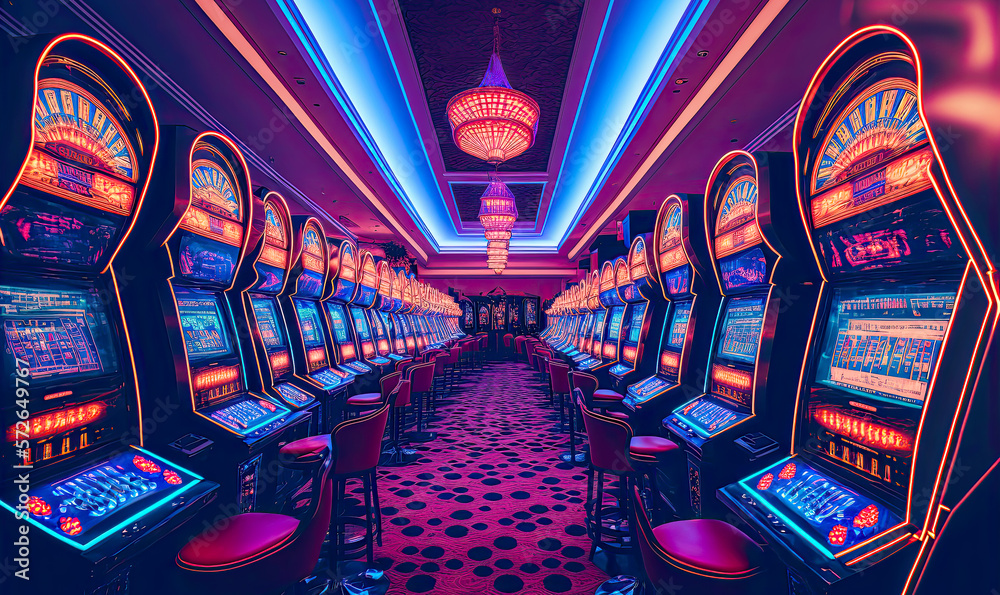
Beneath the shimmering lights plus the alluring sounds of rotating reels lies an dynamic realm where creativity meets numbers: the creation of games of chance. While players converge to gaming establishments seeking excitement plus the chance of winning big, a huge amount of effort takes form behind closed doors to create the games they enjoy. From the starting concept to the final product that players engage with, many elements are brought together to ensure an captivating play experience.
Designers, technicians, and game developers work together to merge cutting-edge technology with enthralling gameplay features. Every aspect, from visuals and audio elements to probabilities plus payouts, is carefully crafted to draw in players plus keep them entertained. Understanding the intricate process of how casino games are made reveals not only the technical expertise involved but also the artistic vision that transforms these engaging experiences to life.
Casino Game Development Workflow
The design workflow begins with brainstorming and concept development, where creators generate ideas for new casino games. This initial phase typically involves identifying target audiences and understanding market trends. Designers take into account elements such as game mechanics, themes, and payout structures to create an immersive experience. Collaboration between game designers, mathematicians, and artists is essential to guarantee a balanced concept.
Once a concept is selected, the next stage involves prototyping and testing. Designers create a working version of the game to assess its playability and mechanics. This facilitates adjustments and refinements based on feedback from testers. ga179 com Iteration is key, as designers may navigate multiple rounds of testing to optimize gameplay balance and user experience. This phase is crucial for spotting any possible issues before the game goes into production.
After testing, the game moves into the development phase and production. This comprises the technical aspects of coding the game software, integrating graphics, and ensuring compliance with gaming regulations. Quality assurance testing ensures that the game functions flawlessly across various platforms and devices. Once everything is refined, the game is prepared for launch, usually accompanied by marketing strategies to attract players and generate buzz around the new casino offering.
Technology and Development
The evolution of casino games has changed significantly with developments in technology. Modern game design often incorporates high-quality graphics, engaging sound effects, and dynamic animations that create a thrilling experience for gamers. Game developers use sophisticated software tools and coding languages to develop these immersive gaming experiences. Additionally, the use of random number generators ensures equity and unpredictability in outcomes, which is crucial for ensuring player trust and compliance with gaming regulations.
In the past few years, the rise of online casinos has expanded the boundaries of game development even further. Developers are now able to design games that appeal to a global audience, integrating features such as live dealers and virtual reality environments. This shift has encouraged creativity, leading to unique game mechanics and formats that enhance player engagement. Gaming on mobile devices has also become a significant focus, encouraging developers to optimize games for smartphones and tablets, ensuring availability and ease of access for players on the go.
Cooperation among creators, visual artists, and math experts is crucial in the development process. Each team contributes their knowledge to make sure games are not only visually appealing but also mathematically sound and enjoyable. The integration of player feedback during testing phases allows developers to enhance game features and functionalities, ultimately leading to a favorable launch. As technology continues to advance, the potential for new game concepts and experiences is unbounded, promising an exciting future for casino games.
Testing and Quality Control
Once a gambling game has been created, it enters the critical phase of evaluation and quality control. This stage ensures that the game operates seamlessly and provides a balanced experience for players. Teams conduct comprehensive tests, including operational checks to ensure that all game features work as expected. Each aspect, from graphics to sound effects, is evaluated to ensure high standards are met.
In addition to operational testing, the game experiences rigorous compliance checks to meet compliance requirements. Different jurisdictions have specific rules governing game fairness and player protection. Quality assurance teams will confirm that the random number generators are functioning correctly and that the game’s payout percentages correspond with industry standards. This meticulous examination helps forge trust with users and authorities alike.
Finally, user testing may be conducted with genuine players to collect insights on user experience. This invaluable insight allows developers to make necessary adjustments before the public launch. Tackling any likely issues recognized during this phase helps ensure that players will have a seamless, captivating experience when the game goes live. The commitment to quality reflects the sector’s dedication to delivering entertaining and dependable casino games.
